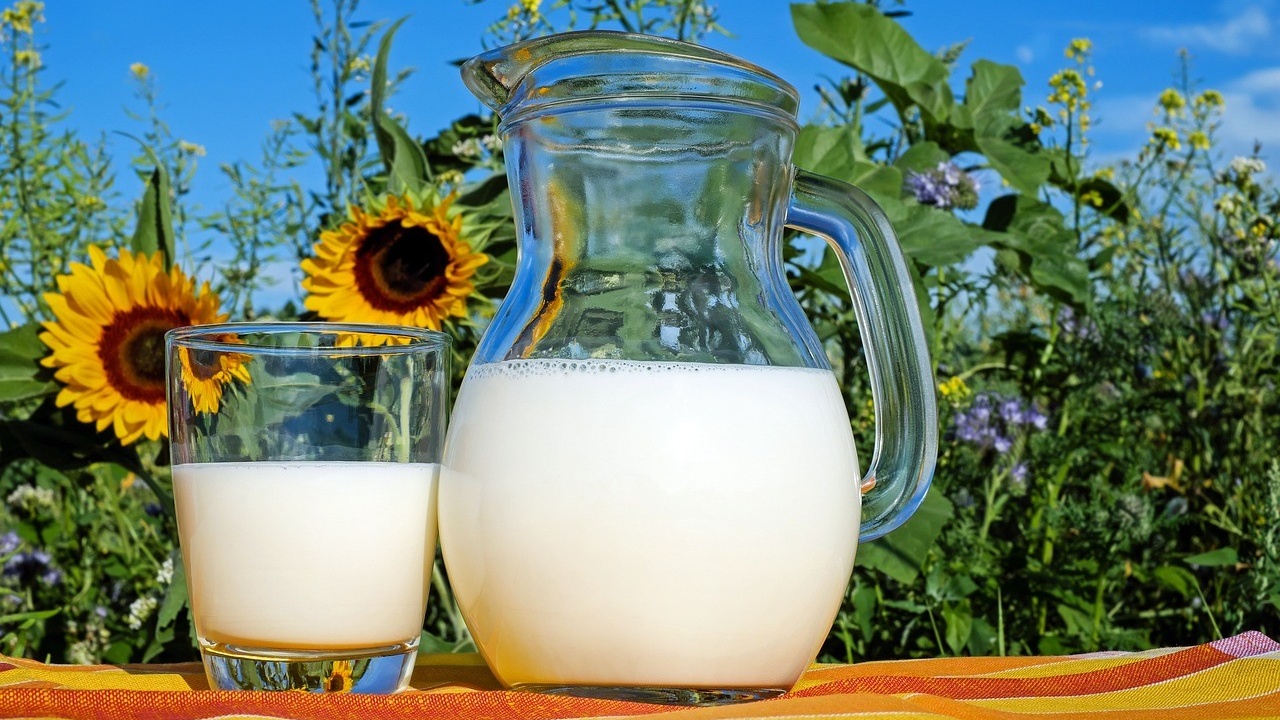
All You Need to Know About Milk, Alternative Milks, and Raw Milk
Milk has always been ubiquitous to the grocery list, but now, we're all so confused about what milk to drink.

From lactose intolerance, farmers going to jail for selling raw milk, and just not knowing what to get at the store, it can stir up the emotions.
Raw milk is where it's at.
Unfortunately it's a little hard to get unless you know a dairy farmer. The website realmilk.com can help you find someone near you who sells raw milk.
Why is raw milk so good for you?
Answer: Enzymes and Probiotics
Raw milk contains an enzyme called phosphatase that helps you digest it, and allows the calcium to absorb into your bones. The test for pasteurization (for store-bought milk) confirms that the milk no longer contains this enzyme.
No wonder so many people have lactose-intolerance! Frequently and fortunately, it's only an allergy to store-bought milk. Raw milk usually is digested just fine.
Raw milk also contains natural probiotics. So, if you currently take a probiotic, you don't really have to. You just have to eat foods (like saurkraut or pickled veggies) or drink something (like raw milk or kombucha) that contains natural probiotics in it.
Pasteurization kills all of these good things.
"But isn't raw milk dangerous?"
According to the CDC, from 1993 - 2006 (13 years), there have been 2 reported deaths from nonpasteurized dairy products.
To put this into perspective, other food-borne illnesses (E Coli, Norovirus, Salmonella, etc.) cause about 23 deaths per year.
Most food-borne illnesses arise from conventional farming. The unhealthy cows and pigs live in their own infected feces (I hope you're not eating right now), which runs off into the nearby Monsanto fields where it infects the food crops. Most of the nation-wide food recalls (usually lettuce or spinach) are due to issues like this.
A story of 2 cows: one fed pasteurized and the other raw milk. There are startling visual differences. They started at the same weight, and at the end of the 4 month study, the raw-fed calf was 200kg and the pasteurized-fed calf 115kg. The raw-fed cow had healthy hair, shiny and thick, whereas the pasteurized-fed calf's fur was easily pulled out.
Good Fats
In addition to being raw, milk should be full-fat. The milk fat contains anti-microbial components, plus milk fat (like butter and fish oil) is rich in fat-soluable vitamin A which is amazing for beautiful skin and hair, and reducing arthritic inflammation.
If you're interested in getting raw milk for your family, go to this website to locate a raw milk "dealer" near you: www.realmilk.com. Like with most things, there are differences in quality of raw milk. Not every farmer puts lots of attention on quality of feed for the animals and things like that; so always ask questions!
Most of my nutrition information comes from the Weston A Price foundation. For more information on their stance on raw milk, visit their site: www.westonaprice.org.
Not a Milk Drinker?
I understand you may not want to chug a big cup of milk at dinner (me neither), but if you use milk in recipes, or cream in your coffee, or if you have kids in the house who like milk, this is the way to go. If you are lactose-intolerant, there's an 86% chance you can digest raw milk! It's maybe worth a try.
For moms who are not able to breastfeed, raw milk with a few drops of cod liver oil is an excellent alternative to breast milk. The above-mentioned website (Weston A Price Foundation) has tons of information for feeding babies, toddlers, and adults too.
What about rice milk / soy milk / coconut milk / almond milk? Aren't those good milk alternatives?
Some are OK...some are just junk. You have to read the labels and understand the ingredients.
Soy Milk
It's unfermented soy, so it's more difficult to digest and absorb the phyto-estrogens. The modern, commercialized process of producing soy milk is a far cry from the old ways. It all but destroys most of the health benefits of the bean.
A better source of soy would be fermented soy products like tofu. I recommend people steer clear of unfermented soy products like soy milk.
Nut Milk, Hemp Milk, Oat Milk
The other milk alternatives are highly processed, and usually are full of sugar and "flavors" to make them palatable. The vitamins you see on the labels are added in to give them a similar nutrition make-up to real milk, but these vitamins are usually poor quality (i.e. Vitamin D2 instead of D3 and beta-carotene instead of real vitamin A) and not digestible.
Oh, and most of the alternative milks add in Calcium Carbonate, a major no-no. It's frequently used in cheap vitamins as "Calcium," but really, it's made from limestone. Your body can't absorb it or use it. Not to mention what it does to your Kidneys!
There are a few alternative milks that aren't full of nasty preservatives, sugar, and flavors available these days. They're OK if you truly can't digest any dairy at all. The ones I've found and like are Milkadamia, Ripple, Elmhurst, Kiki Milk, and MALK. I look at the label to see ingredients that I'm familiar with, no added sugar, no calcium carbonate, and few - if any - preservatives.
Better yet, make your own.
Don't miss a beat!
New moves, motivation, and classes delivered to your inbox.
We hate SPAM. We will never sell your information, for any reason.
